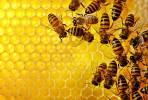Flu season alert: Protect yourself, and others, from germs
Germs: If we could see them, it would be much easier to avoid catching the flu or a cold. However, since germs are invisible to the naked eye, we look for different forms of protection, especially during flu season when risk of a specific illness runs high.
The Centers for Disease Control and Prevention (CDC) designates flu season during the fall and winter months, with the peak varying in occurrence anywhere from November to March. Generally, if the calendar month contains the letter 'R', it's flu season. The CDC further reports that nearly 200,000 people are hospitalized due to the flu each year, and about 36,000 people die from it.
To help you guard yourself and your family, Dr. Anthony "Jay" Avenido, chair of the Allied Health department at Brown Mackie College - Cincinnati offers advice on how to steer clear of this invisible menace.
"The environment is filled with germs," says Avenido. "They live on telephones, keyboards, door handles, and gas pumps." Germs transfer easily, even without direct contact with an infected person. Whenever an infected person handles something, germs transfer to the surface. Once there, the germs can live up to several days. "One person can literally transmit germs to hundreds. As we routinely encounter germs, they find ways into our bodies," he says.
"We transmit germs in our normal daily contact with people and objects," says Avenido. "Germs get into our bodies a number of different ways. They enter through the eyes, nose, and mouth. The airway passage serves as a major point of entry for germs. We breathe them in. Even small cuts and scrapes are an open door for germs."
Each time a person coughs or sneezes, respiratory droplets containing germs are expelled from the body. An uncovered sneeze can spread droplets several feet away from the source, putting everyone in the general vicinity at risk. With a little knowledge, you can minimize the spreading of your own germs, and help protect yourself against the germs of others.
Protective measures
"It is important to take precautions against germs," Avenido advises. "I don't recommend covering a cough or sneeze with your hand. This may limit the number of germs moving through the air; however, you will now carry them on your hand. You will inevitably touch something and leave germs behind for others. That's why kids get sick a lot. They touch everything." Avenido recommends creating a barrier between yourself and others when a sneeze is imminent. You can do this by sneezing into your elbow. The same rule applies for coughing.
Proper hand washing is another good defense against germs. "This is not the time for perfunctory hand washing. Water without soap is not effective," Avenido says. "The ingredients of the soap help to break down the bacterium. A thorough hand washing includes warm water and soap. Scrub hands, front and back, and in between the fingers for 20 seconds That's long enough to sing 'Row, Row, Row, Your Boat' twice." Avenido says while washing, use pressure to create friction, which gets the substance of the soap into bacteria. "If you sneeze or cough into your hand, wash ASAP," he says."If washing isn't convenient, use a hand sanitizer that contains alcohol."
In today's world, it isn't practical to stay home from school or work for the duration of a cold. However, it is important to be aware of how sick you are. "Know your symptoms. If you have a fever of 100 degrees or more, you may want to just stay home, especially if you're experiencing discharge from the nose, or coughing and sneezing frequently," says Avenido.























